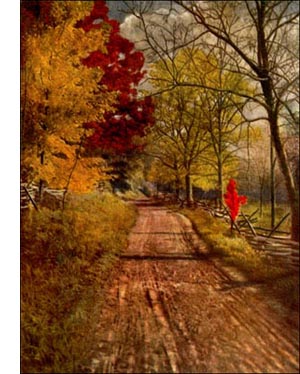Red Fir Tree
 Red Fir (Abies nobilis, Lindl.)-A broad, round-headed tree 150 to 250 feet high, with trunk 6 to 8 feet through; branches stiff; twigs red velvety. Bark 1 to 2 inches thick, irregularly furrowed, red-brown. Wood hard, pale brown, streaked with red, light, strong, moderately close in texture; sap wood darker. Buds small, blunt, reddish. Leaves blue-green, often glaucous when young, flat, grooved above, crowded to upper side of twigs, and curved backward, 1 to 1 1/2 inches long, on fertile shoots, 4-angled, sharp. Flowers : staminate reddish purple; pistillate scattered on upper limbs, bracts ornate with recurved tips. Fruit oblong, thick, blunt at apex and base, q4 to 5 inches long, purplish or brown, pubescent; scales covered with thin toothed bracts which end in recurving, pencil-like projections. Preferred habitat, mountain slopes at 2,500 to 5,000 feet elevation. Distribution, mountains of western Washington, Oregon and California. Uses: Lumber for interior finish of houses and for boxing. Rarely planted in Eastern States. Needs shelter at Boston. Cultivated in Europe.
Red Fir (Abies nobilis, Lindl.)-A broad, round-headed tree 150 to 250 feet high, with trunk 6 to 8 feet through; branches stiff; twigs red velvety. Bark 1 to 2 inches thick, irregularly furrowed, red-brown. Wood hard, pale brown, streaked with red, light, strong, moderately close in texture; sap wood darker. Buds small, blunt, reddish. Leaves blue-green, often glaucous when young, flat, grooved above, crowded to upper side of twigs, and curved backward, 1 to 1 1/2 inches long, on fertile shoots, 4-angled, sharp. Flowers : staminate reddish purple; pistillate scattered on upper limbs, bracts ornate with recurved tips. Fruit oblong, thick, blunt at apex and base, q4 to 5 inches long, purplish or brown, pubescent; scales covered with thin toothed bracts which end in recurving, pencil-like projections. Preferred habitat, mountain slopes at 2,500 to 5,000 feet elevation. Distribution, mountains of western Washington, Oregon and California. Uses: Lumber for interior finish of houses and for boxing. Rarely planted in Eastern States. Needs shelter at Boston. Cultivated in Europe.The red fir, another giant of the Northwest, attains its best development in the Cascade Mountains of Washington and Oregon on elevated slopes facing the sea. An old tree is often Zoo to 250 feet high, with a trunk 6 to 8 feet in diameter, crowned with a broad, round head, quite distinct from the spire form usual among firs. There are forests of this tree which furnish, at present in limited quantities, wood for boxing and house finishing. The wood is brownish red, with sap wood of a darker colour. The lumber dealer calls it "larch." As long as better lumber is to be had, these forests will be allowed to wait.
The distinctive features of this tree are its glaucous, bluegreen foliage and the stout brown or purple cones, 4 to 5 inches long, and richly ornamented by the bracts which turn back like little pale green scallop shells over each scale.